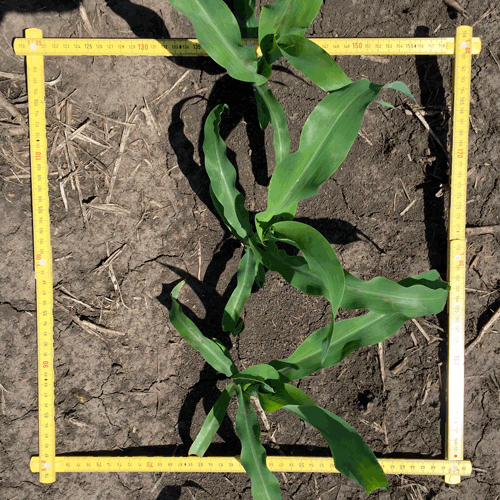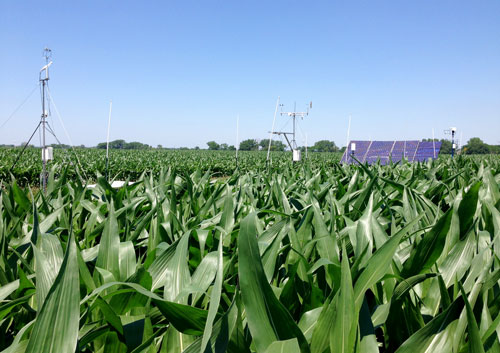Science
Global warming, or climate change, has been one of the most frequently discussed topics in the past few decades. Do we know how climate change happens? How sure are we about the future climate? These questions prompted us to consider how we can help improve climate models to understand climate change better.
We know that the atmosphere, plants, and the soils play important roles in carbon and water cycles. Carbon and water are tightly linked to greenhouse gasses. Currently, scientists have developed very advanced models to forecast climate and ecosystem functions such as carbon exchange at regional and global scales. However, there are many unknowns in how local scale phenomena, such as variations in water and carbon exchange throughout the day, relate to large scale phenomena and vice versa. Therefore, the dynamics and role of land surface processes at the local scale are not well represented in current climate models. Understanding the connections between ecosystem functions and climate change across multiple scales is key to improving climate change models. So the big question is:

Ecosystem Functions
Ecosystem functions that are important for climate dynamics include photosynthesis, respiration, and transpiration. These functions are related to carbon and water cycles. Temperature, moisture, and light are important environmental factors influencing ecosystem functions. How strongly each factor influences each ecosystem function varies across the season, plant type, and environmental conditions. Ecosystem functions and their associated environmental factors have complex, intricate relationships. As the first step toward answering the big question, therefore, we formulated a series of science questions to untangle key relationships between ecosystem functions and environmental factors:
- What environmental factors limit plant photosynthesis and respiration?
- How do those factors interact with each other and influence the rates of photosynthesis and respiration?
- How do those interactions and their influence on photosynthesis and respiration vary within a day, and across the day and season?
- Can we partition ecosystem respiration into multiple sources: (1) aboveground biomass, (2) belowground biomass or roots, (3) soil-microorganism respiration, and (4) organic matter decomposition?
- If we can, how do the proportions vary diurnally and seasonally? What causes those variabilities?
![]() LDRD Day 2016 EcoSpec Poster: Observing Ecosystem Metabolism & Breathing
LDRD Day 2016 EcoSpec Poster: Observing Ecosystem Metabolism & Breathing

Challenges
To tackle the questions on ecosystem functions, there are four major challenges to studying local scale phenomena:
- Ecosystem functions are not directly visible to the naked eye, which makes observation and monitoring difficult,
- Advanced sensors installed in the field can collect data only from a limited number of discrete locations, which would not provide accurate measurements across space,
- Unlike water and air, plants and soil are not readily replaceable, which makes frequent sampling over time unfeasible, and
- Repeated physical access to study sites to collect data would alter the subject of study, increasing the uncertainty of results.
How can we overcome these challenges?

Hyperspectral Remote Sensing
Researchers think that remote sensing, particularly hyperspectral remote sensing, is a great tool for collecting ecosystem measurements at local scale with high temporal frequency such as every minute or every half-hour. But there are a few considerations:
- Remote sensing can only collect indirect measurements using reflected sunlight from a land surface (e.g., plants and soil),
- There is a very limited availability of instruments that can collect such detailed hyperspectral data and supporting measurements from remote outdoor locations continuously across the growing season, and
- There are no established methodologies for analyzing high temporal frequency hyperspectral data, which is sensitive to environmental conditions such as sun angle and cloud cover.
To use hyperspectral technology effectively, we need to demonstrate the relevance and feasibility of indirect remotely sensed observations for studying ecosystem functions. Here are the technical questions we attempt to answer:
- How can we collect hyperspectral reflectance measurements from a land surface frequently from dawn to dusk, every day throughout the growing season?
- How can we standardize hyperspectral reflectance measurements that are collected under different environmental conditions?
- How can we model the effects of sun angle, varying cloud cover, and their interactions on the spectral reflectance of a land surface within a day and across the growing season?
- How can we analyze big, complex hyperspectral reflectance time series data?

To try to answer some of these questions, the EcoSpec project was born in October 2014. Learn more about the project Data and Analytics.